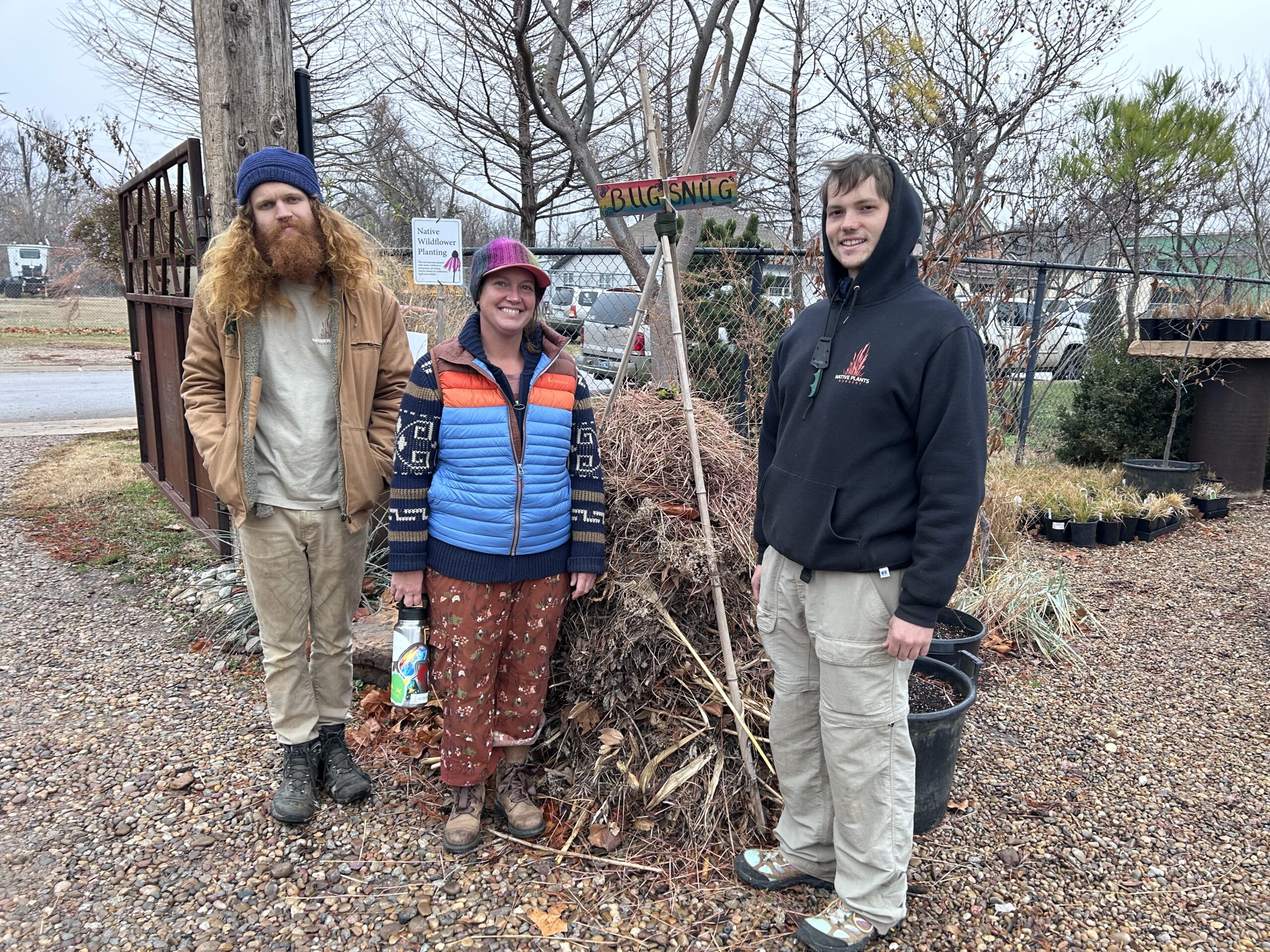
By now, you’ve likely heard us extol the virtues of “leaving your leaves.” Pollinators of all stripes (and spots!) depend on leaf litter, twigs and brush to survive the winter, and need all the support they can get.
We recently had the opportunity to join our friends at Native Plants Nursery for a winter tour of their facilities, and it was nothing short of inspiring! From a five-star hotel for bugs and birds to a simple shelter local bees will adore, there’s no shortage of fun to be had as we patiently wait for spring. Come along as we discover innovative and eco-friendly ways to support local wildlife throughout the freezin’ season.

Upon entering the property, we’re greeted by what appears to be a simple setup: layers of organic debris stacked between three bamboo poles. Mounted atop the poles is a sign containing the words “BUG SNUG,” pictured above. The installation of a bug snug – a winter habitat for insects, birds, and other wildlife – was first suggested by local birder Sean Washington, aka The Fit Naturalist. Materials were gathered, and a beautiful, functional new living space for all kinds of critters was constructed in no time at all.
The benefits of a bug snug are numerous, and last well beyond the winter months. As temperatures drop and food sources become more scarce, some insects – like Fritillaries and Luna moths –slow down and shelter in place. Providing space and for this much-needed rest The Birds, too, reap the benefits by feeding on insects and their larvae, and the collection of materials for their nests. Ready to support more wildlife this winter? Here’s your chance!
YOU WILL NEED:
- Three poles, roughly the same length. These can take the form of tree limbs, bamboo, or cane.
- Oragnic matter from around the yard: grass, leaves, twigs, etc.
- Twine or string
- Hammer (optional)
First, tie your poles together at the top to form a pyramid. Next, using a hammer or a rock, drive the poles into the ground. Finally, stack organic matter in layers.
All that’s left to do is observe. You’re likely to see some new tenants take up residence as the weeks go by! A magnifying glass is a great tool for getting a better view without disturbing your resting guests. Birds will be more bountiful as well, and you may even consider installing a feeder nearby to further support the biodiversity in your backyard.
We want to see what you create! Make sure to tag @okiesformonarchs and @nativeplantsokc in your photos. Every effort adds up, and we hope you’ll thoughtfully consider implementing this simple, pollinator-friendly approach to winterizing your garden!
Thank you to Brian, Tammy, and the fantastic team at Native Plants for generously providing their time and expertise.
